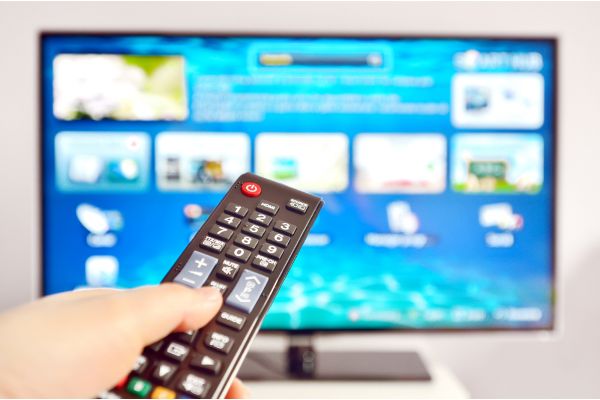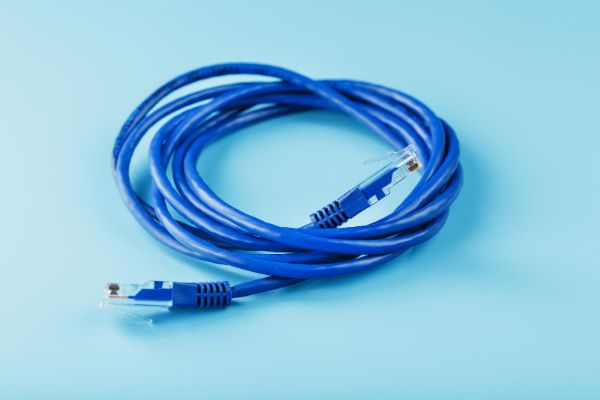Disclaimer: This post may contain affiliate links, meaning we get a small commission if you make a purchase through our links, at no cost to you. For more information, please visit our Disclaimer Page.
Many people think of computers when they discuss the internet, but many of our devices are online today, or they are capable of online access. Televisions are no exception to this, but not all of them can get online and help you access features on the web. In order to do this, you probably need a special smart TV. These kinds of televisions have already been around for many years, but manufacturers have made updates and expansions to what the modern sets can do.
In fact, most of the high-definition televisions that you can buy today are probably somewhere on the smart TV scale. You can think of a smart TV in contrast to older TVs that had no such capabilities. These old sets needed antennas or satellites to receive signals that would give you the local and cable channels you might have had. Smart TVs, much like smartphones, use apps and the internet.
Because of the huge leap in technology with televisions like these, some people wonder whether either smart or traditional TVs might have ethernet ports. We will cover both of these types of devices in our article.
As we move along, we can discuss some of the other ways that you might get your own smart TV online, particularly when you want to connect it to your Wi-Fi network. We’ll go into some details on ethernet connections, Wi-Fi, and direct router hookups you might use.
Table of Contents
Do Smart TVs Have Ethernet Ports?
Yes, many smart televisions that you find on the market should come with at least one ethernet port. In most cases, this port will be somewhere on the back of the TV.
However, not all smart TVs have a jack for ethernet compatibility.
If this kind of connection is important to you, you should research the specifications for different smart TV models carefully. Most manufacturers will list the different connectivity options that come with their televisions as good selling points, so you can check for these kinds of things right on the product page on a website.
If you are unsure, you can also ask the manufacturer directly if a particular model that interests you supports an ethernet connection.
Ethernet is one of the ways you can get your smart TV online, and it is typically a very stable connection. Therefore, many developers have some incentive to include at least one of these ports on the TV. With no problems receiving a wireless signal, the TV should not have to deal with any kind of lag or interruption, although such things are still possible.
There may be some caveats to using ethernet in lieu of a standard home Wi-Fi connection, too. We will contrast these two types of digital access in detail once we reach a later section.
Do Non-Smart TVs Have Ethernet Ports?
In most cases, a TV that a manufacturer did not make with any smart capabilities in mind will not have an ethernet port on it. This is because of the limitations with the television’s own hardware.
Without the smart features you’ve come to expect from more modern televisions, there is no reason for the standard TV to have such a port. It will not need to get online, and it cannot run most apps.
However, you might discover a few exceptions to this rule along the way. There are some models of televisions that developers do not consider smart, but they might include an ethernet port on them anyway. Often, this accessory will serve a couple of main purposes.
To begin with, even some non-smart televisions might require some occasional firmware updates. Firmware is a special type of software that manufacturers embed in the chips of certain pieces of hardware.
The firmware helps the device decide how to function. It can also make it more secure, or it may introduce new features. In order to keep a standard television current, some of them may use ethernet connections as a way to update the firmware. In short, you can think of it as special software that helps some devices interpret instructions in order to complete specific goals.
Additionally, although most TVs that are not smart cannot run apps, some of them have apps that the manufacturer puts there deliberately. To access, update, or run these apps, you may need an ethernet connection.
The apps in question usually have quite simple designs or purposes. Common ones you might see would include basic weather apps that can display local information for you.
Are There Other Ways for a Smart TV To Connect to Wi-Fi?
Yes, most smart televisions should offer you a range of connection options. Ethernet may be one of the most stable, but you can look through your TV’s settings to see what other connections it might support. If your smart Tv has the option, be careful with connecting to hotspots. We’ll explain that issue in another article here.
Even televisions that have ethernet ports should still allow you to get online using standard Wi-Fi practices. To do this, you can follow these general guidelines:
1. If it is your first time setting up a new smart TV, the welcome screen should start the process for you.
2. Follow any prompts on the screen, and your television might get to a point where it searches for available Wi-Fi networks in the area by itself.
3. If this happens, it should also ask you to choose between a wired or wireless connection type.
4. Should you want to forego ethernet, you can choose the wireless connection option on the screen.
5. Select your network of choice, then enter any security information you may need to let the TV have in order to get it online.
6. Your new smart TV should connect to your home network now, although it may ask you to wait while it upgrades the firmware for the first time.
Is Ethernet Better Than Wi-Fi for Smart TV?
Whether ethernet is better than a wireless connection can depend on your priorities, preferences, and what you plan to do with the TV.
There is no clear answer, but there are ways to determine which one might be right for you. As your situation changes, so too might the connection type you want to use for your smart TV.
With all else being equal, a wired connection to the internet should be more stable than a wireless one. This is because you have a cable that provides a secure, physical way for data to go back and forth between your devices and the hardware that your internet service provider gives you when you sign up for service.
Typically, the physical link should mean that there is less interference from everything else on the network. Additionally, it should be harder for your television to experience any latency that might cause a drop in the signal. If you do notice such a dip, you may find that the video or audio stutters, freezes, or gets out of sync for a while before the signal catches up again.
However, there are some pros to having a wireless connection in a modern smart TV, too. With the ways in which modern internet technology continues to improve, many wireless speeds are much faster than the top speeds you might get with the ethernet connection on a television. These devices have ethernet cards, and those cards may support a maximum of 100 or so Mbps speeds.
This sounds fast, but it is much slower than the connections that even basic computers today can support. Depending on how many other devices you have, what you’re doing, and what speeds you need, you might prefer a faster connection. However, the speeds that top ethernet cards offer are still more than enough for ultra-high definition streaming today.
Can I Use a USB to Ethernet Adapter on a Smart TV?
Yes, you can do so if it has a port for it. Most smart TVs today should have Wi-Fi access capabilities, but you might get a model that does not. If this is the case, you can try to find a USB port on the TV.
If it has one, you may be able to get a Wi-Fi adapter that you can plug into the port. Doing so makes it so that you have an accessory that acts as a bridge between your internet hardware and a television without native Wi-Fi support.
Can I Connect My Smart TV Directly to My Router?
Yes, along with an ethernet connection, you should be able to plug one end of the cable into the router directly. You can also do this with your modem. In either case, you would need to make sure that you place your smart TV somewhere close to your internet hardware for the best results. Although many ethernet cables are long, using a short connection that is not too messy may help things look their best in your entertainment system.
Conclusion
Most of the televisions that you’ll buy right from your favorite retailer today have some kind of smart capabilities. Many people use them to stream content via the internet. However, you can also make them part of an entire home network of smart devices, and the TV of your choice could control other accessories. If your model doesn’t have an ethernet port, there are still wireless or USB adapter options for you to try.


